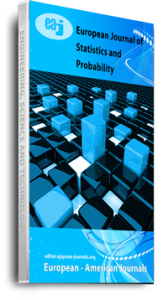Background: The relationship between Human Immunodeficiency Virus (HIV) and Tuberculosis (TB) is complex, resulting in the synergistic increases in their morbidity and mortality. The occurrence of both infections worldwide is a great public health problem. There is a looming threat of a pandemic emerging in Ghana as it has been in other African countries. The advent of the potent combination of antiretroviral therapy (ARV) in 1996 has been of immense effect in extending the life span of infected patients by slowing the wasting period, and boosting the CD4 cell count of an infected patient. This study aimed to evaluate the survival rate of HIV/AIDS and HIV/TB co-infection patients and to examine the influence of prognostic factors on the survival of patients and then fit Accelerated Failure time model for monitoring the performance of patients on HIV/AIDS and co-infection chemotherapy. Methods: The study considered a real-life data set obtained from St. Mathias Hospital, a referral center for health centers in the Pru District of the Brong Ahafo Region of Ghana. The hospital has a unit for both anti-retroviral therapy (ART) and tuberculosis (TB). The study considered patients above five years of age on treatment regimen between 2008 to 2013.The patients were followed retrospectively until the outcomes of either the event (treatment failure) or being censored. Accelerated Failure time model was used to explore the survival rate and prognostic factors of HIV/AIDS and HIV/TB co-infected patients. Results: Within the follow-up period 2008 to 2013, out of the 295 HIV/AIDS patients followed, 58 (19.7%) died and 25 (32.9%) died from the 76 HIV/TB co-infected. The survival estimates at the end of 70th month for HIV/AIDS and the co-infection were respectively 0.4110 and 0.1892. This suggests that the patients with co-infection experienced a worse survival rate compared to the HIV/AIDS patients. The best fitted model for survival analysis in HIV/AIDS and TB co-infection is the Gamma model. Among the several prognostic factors evaluated by the Gamma model, gender, weight, CD4 cell count, and WHO Clinical Stages I and III were identified as significant prognostic factors at 5% significance level for the HIV/AIDS patients. In the HIV/TB co-infection, however, only weight and CD4 cell count of the patients are significant at 5%. The significant prognostic factors indicated that a unit increase in these prognostic factors would significantly improve the survival time of the patients at different rates. Holding all covariates constant, the survival time is 6.44 and 1.084 times longer for a unit increase in the weights of a HIV/AIDS and HIV/TB co-infected patients respectively. Conclusion: More sexually active people contract the HIV and the TB co-morbidity of HIV/AIDS develops more in the older patients but may occur at any stage in the course of the immunodeficiency. From both the survivorship time table method and the best fitted AFT model, the Gamma model, HIV/TB co-infected patients experienced the worse survival rate. In both disease situations, weight and CD4 cell count prognostic factors could be used to effectively and efficiently monitor the survival rate of patients on ART chemotherapy by implementing Gamma AFT modelling.
Keywords: Accelerated failure time model, CD4 cell count., Cox-Snell residual, HIV/TB co-infection, prognostic factors

